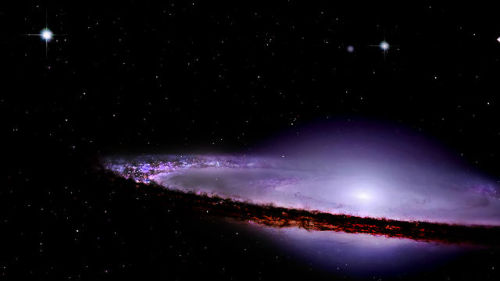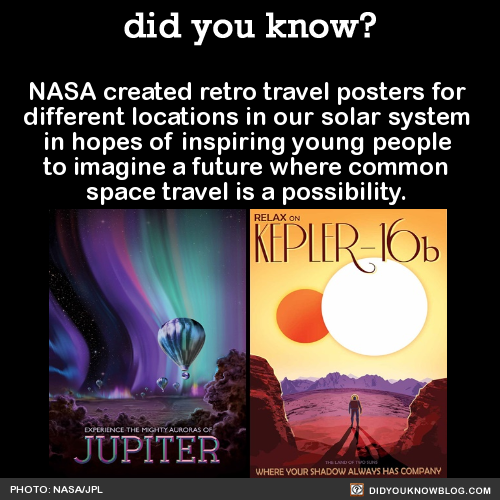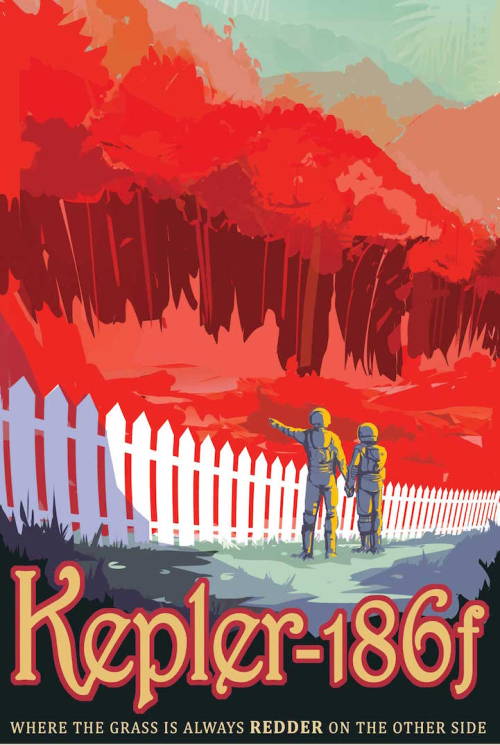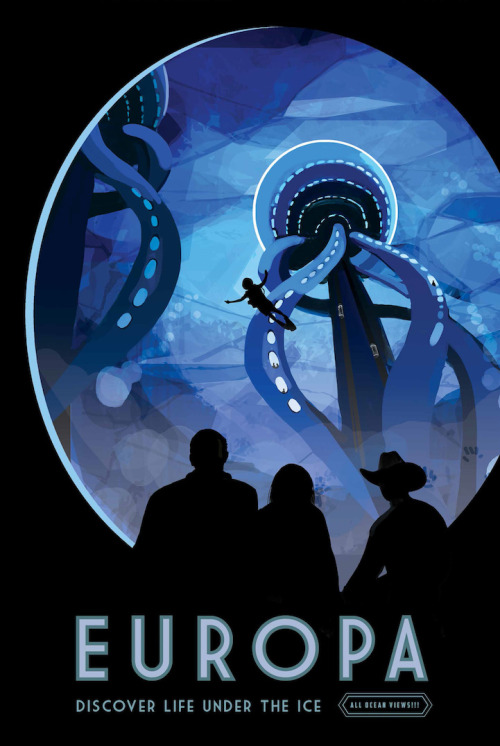A Multi-Camera 360° Panoramic Timelapse Of The Stars By Vincent Brady [VIDEO]
![A Multi-Camera 360° Panoramic Timelapse Of The Stars By Vincent Brady [VIDEO]](https://64.media.tumblr.com/4e12ed79b6fa93fbd2f17ccd004921d6/tumblr_n7h573O5RR1rte5gyo1_500.gif)
A Multi-Camera 360° Panoramic Timelapse of the Stars by Vincent Brady [VIDEO]
More Posts from Alitheastronomer and Others







Pluto (bottom image) with various other non-planets.
Since everyone has their knickers in a knot over Pluto not being a planet, here are various different celestial objects who are also not classified as planets. You’ll notice, just because it’s not called a “planet” doesn’t mean it isn’t cool.
Let us be reminded, there is no heirarchy of celestial bodies. It wasn’t necessarily “demoted” from planethood, it was simply reclassified as something else. There’s literally no reason to be emotionally attatched to the idea of Pluto’s planetary classifaction.
But what “classifies” a planet anyway?
According to the International Astronomical Union, there are 3 basic requirements that it must meet: 1) It orbits the sun 2) Sufficient mass to assume a “hydrostatic equilibrium” (meaning it’s mostly shaped like a globe) 3) Has “cleared its neighborhood” in its orbit.
The third one is where Pluto fails. What they mean by “clearing the neighborhood” is that the orbital path is good and clear. Every planet will still collide with something now and then but their orbital paths are not occupied by anything that is similar to the size of the planet itself. They’re not really in danger of running into much of anything except maybe an asteroid or a comet that might enter their path and collide.
In addition, here is an image showcasing the dwarf planets of the solar system. Pluto isn’t alone in it’s classification.

So don’t be sad over Pluto not being a planet, you’re just being melodramatic. Wipe your tears away with some scientific literacy. ;)

The stunning Sombrero galaxy (seriously, there should be a blog that’s just photos of the Sombrero galaxy)

NASA created retro travel posters for different locations in our solar system in hopes of inspiring young people to imagine a future where common space travel is a possibility.





Source
Just the facts!

This is probably the most majestic playlist I've ever heard.


LEAVING EARTH. “When once you have tasted flight, you will forever walk the earth with your eyes turned skyward, for there you have been, and there you will always long to return.” For courageous travellers. Go forth and explore. [listen]

The Space Shuttle Columbia
Pause today to remember the Crew of STS-107, who all died on this day 13 years ago, February 1, 2003, when the Space Shuttle Columbia became unstable and disintegrated on re-entry over Texas. The Crew:
The Flight Commander was Rick D. Husband, a U.S. Air Force colonel and mechanical engineer, who piloted a previous shuttle during the first docking with the International Space Station on STS-96.
The Pilot was William C. McCool, a 1983 graduate of the United States Naval Academy in Annapolis, Maryland and U.S. Navy commander.
The Payload Commander was Michael P. Anderson, a U.S. Air Force lieutenant colonel. He was also a physicist and mission specialist who was in charge of the science mission.
The Payload Specialist Ilan Ramon was a colonel in the Israeli Air Force and the first Israeli astronaut.
The Mission Specialist was Kalpana Chawla, an Indian-born aerospace engineer who was on her second space mission. She was the first Indian woman in space.
The Mission Specialist was David M. Brown, a U.S. Navy captain trained as an aviator and flight surgeon.
The Mission Specialist was Laurel Blair Salton Clark, a U.S. Navy captain and flight surgeon. Clark worked on biological experiments.
The Space Shuttle Columbia was named after the poetic designation for the United States of America. This poetic name (based on Christopher Columbus, thought then as the sole discoverer of America) was meant to be both inclusive and a little bit nostalgic, in the sense that America could be embodied in a name. Clearly these seven astronauts and mission specialists embodied the best spirit of America, the inclusion of an Indian and Israeli the strongest symbol yet of what America can accomplish when unified to a common purpose. Special thought to William McCool, graduate of the USNA-I pass almost daily the ‘McCool Marker’, a memorial on the grounds of the USNA golf course to celebrate his achievements both as a Naval Aviator but also his accomplishments as a Midshipman, where he served as Captian of the Cross Country team his senior year. The marker is placed on the cross country course 16 minutes from the finish line of his fastest run on the Navy course.

Caldwell 24, NGC 1275, Perseus A | May 1, 2003

NGC 4522
js

-
 tesseract-of-lanulos reblogged this · 3 months ago
tesseract-of-lanulos reblogged this · 3 months ago -
 mesonoxian-maxx liked this · 3 months ago
mesonoxian-maxx liked this · 3 months ago -
 alienworlds reblogged this · 3 months ago
alienworlds reblogged this · 3 months ago -
 wildcardfairyvision liked this · 3 months ago
wildcardfairyvision liked this · 3 months ago -
 freeedaa reblogged this · 4 months ago
freeedaa reblogged this · 4 months ago -
 ai-meems liked this · 5 months ago
ai-meems liked this · 5 months ago -
 artill58 liked this · 6 months ago
artill58 liked this · 6 months ago -
 annalgc19 liked this · 6 months ago
annalgc19 liked this · 6 months ago -
 oleg46sblog liked this · 8 months ago
oleg46sblog liked this · 8 months ago -
 cannabi-woman reblogged this · 8 months ago
cannabi-woman reblogged this · 8 months ago -
 westoness reblogged this · 8 months ago
westoness reblogged this · 8 months ago -
 westoness liked this · 8 months ago
westoness liked this · 8 months ago -
 moonlight-pisces liked this · 8 months ago
moonlight-pisces liked this · 8 months ago -
 deepbluesskies reblogged this · 8 months ago
deepbluesskies reblogged this · 8 months ago -
 sem-piterno liked this · 8 months ago
sem-piterno liked this · 8 months ago -
 missnitroglicerina reblogged this · 8 months ago
missnitroglicerina reblogged this · 8 months ago -
 hypnoticreality reblogged this · 8 months ago
hypnoticreality reblogged this · 8 months ago -
 hypnoticreality liked this · 8 months ago
hypnoticreality liked this · 8 months ago -
 cat-pics-and-videos liked this · 9 months ago
cat-pics-and-videos liked this · 9 months ago -
 lwmarshill liked this · 9 months ago
lwmarshill liked this · 9 months ago -
 slimesosa reblogged this · 9 months ago
slimesosa reblogged this · 9 months ago -
 yungicey liked this · 9 months ago
yungicey liked this · 9 months ago -
 1plus liked this · 9 months ago
1plus liked this · 9 months ago -
 justruben310 reblogged this · 9 months ago
justruben310 reblogged this · 9 months ago -
 stayinga-float reblogged this · 9 months ago
stayinga-float reblogged this · 9 months ago -
 m00nxtal reblogged this · 9 months ago
m00nxtal reblogged this · 9 months ago -
 m00nxtal liked this · 9 months ago
m00nxtal liked this · 9 months ago -
 rebbellsinchad liked this · 9 months ago
rebbellsinchad liked this · 9 months ago -
 se7enlemons reblogged this · 9 months ago
se7enlemons reblogged this · 9 months ago -
 queenoffists reblogged this · 9 months ago
queenoffists reblogged this · 9 months ago -
 gregorlenko liked this · 9 months ago
gregorlenko liked this · 9 months ago -
 thefinestwaifu reblogged this · 9 months ago
thefinestwaifu reblogged this · 9 months ago -
 thefinestwaifu liked this · 9 months ago
thefinestwaifu liked this · 9 months ago -
 qqbbqqbbqq reblogged this · 9 months ago
qqbbqqbbqq reblogged this · 9 months ago -
 johannesburgterror liked this · 9 months ago
johannesburgterror liked this · 9 months ago -
 alamuts-lair-of-madness reblogged this · 9 months ago
alamuts-lair-of-madness reblogged this · 9 months ago -
 alamuts-lair-of-madness liked this · 9 months ago
alamuts-lair-of-madness liked this · 9 months ago -
 nonenosome2 reblogged this · 9 months ago
nonenosome2 reblogged this · 9 months ago -
 nonenosome2 liked this · 9 months ago
nonenosome2 liked this · 9 months ago -
 ubernaut reblogged this · 9 months ago
ubernaut reblogged this · 9 months ago -
 ubernaut liked this · 9 months ago
ubernaut liked this · 9 months ago -
 hxneybeekind444x reblogged this · 9 months ago
hxneybeekind444x reblogged this · 9 months ago -
 justkendal reblogged this · 9 months ago
justkendal reblogged this · 9 months ago -
 heartlessvoid reblogged this · 9 months ago
heartlessvoid reblogged this · 9 months ago
